Contents
- Early History
- Colonial History
- Post-Independence Era and Contemporary Educational Infrastructure
- Primary & Secondary Education
- Institutions of Higher Learning
- RJVS Bhaisaheb Sawant Ayurved Mahavidyalaya
- Government Polytechnic College
- Devgad College, Devgad
- Prominent Figures & Organizations
- Phondagat Education Society
- NGOs and Community-Based Education Efforts
- Dada Chi Shala
- Graphs
- Enrollment and Dropout Rate
- A. Student Enrollment Numbers
- B. Student Enrollment (Class-Wise)
- C. Student Enrollment (Gender-Wise)
- D. Student Enrollment (By School Management Type)
- E. Drop Out Rate (By Schooling Level)
- F. Drop Out Rate (By Gender)
- Schools
- A. No. of Schools
- B. No. of Schools (Filtered by Gender Mix)
- C. No. of Schools (By School Management Type)
- Teachers
- A. No. of Teachers
- B. No. of Teachers (By School Management Type)
- C. No. of Teachers (Male vs Female)
- D. Education Level of Teachers
- Sources
SINDHUDURG
Education
Last updated on 28 July 2025. Help us improve the information on this page by clicking on suggest edits or writing to us.
The educational framework of Sindhudurg aligns with the broader structure of the Indian education system, encompassing pre-primary, primary, secondary, and higher education. By the 19th century, the introduction of the Western education framework in the district changed its educational landscape. British administrators and missionaries became actively involved in shaping education in the region.
Still, even as colonial influences grew, the early 20th century saw a wave of local initiatives; its existence indicated an increasing public awareness regarding the importance of education. Local communities took charge of education, a movement that carried into the post-independence era, shaping the district’s educational landscape in lasting ways.
Early History
Little is known about the history of education in Sindhudurg, however, this does not imply that any form of education was completely absent in the district. It is possible that, like many places across Maharashtra, some systems of education or learning did exist in the district in earlier times.
It is possible that certain forms of knowledge transmission existed within local communities. Among the notable communities in Sindhudurg who are preserving their traditions are the Thakars and Thakurs. They are believed to have resided in the region for over four centuries and sustained art forms such as Chitrakathi, a narrative visual storytelling tradition, and Kalsutri Bahulya, a style of string puppetry. Both art forms are estimated to date back between 300 and 500 years and are closely associated with epics such as the Ramayan and Mahabharat. Through learning these crafts, younger members of the community absorbed skills, stories, and values, suggesting a mode of informal but structured form of education.
Colonial History
The colonial period introduced the concept of state and public schools in Maharashtra. According to the colonial district Gazetteer (1880) from 1878-79, there were forty state schools, including one anglo-vernacular school. Despite this, Marathi remained the predominant language of instruction.
The Gazetteer mentions a native general library established in the 1850s within the district. This library, funded partly by the state and partly through subscriptions, reflects the significant interest in reading and the literacy levels of the district during the era.
Post-Independence Era and Contemporary Educational Infrastructure
Following India's independence, the education system in the district underwent major transformations, driven by both state policies and local leadership. The introduction of structured education levels: pre-primary, primary, secondary, and higher education, along with the implementation of National Education Policies, heavily shaped Sindhudurg’s educational landscape. Over the years, the sector expanded with contributions from both government-funded institutions and private organizations. Additionally, the introduction of various educational boards, each offering distinct curricula and standards, provided students with more choices and opportunities.
Primary & Secondary Education
During the colonial period, both public and private efforts in education primarily focused on primary and secondary schooling, as indicated by data from district gazetteers across Maharashtra. Higher education remained underdeveloped in most districts, including Sindhudurg, with gradual improvements over time. While basic infrastructure for primary and secondary education existed, its expansion was closely tied to increasing enrollment and greater involvement of local figures.
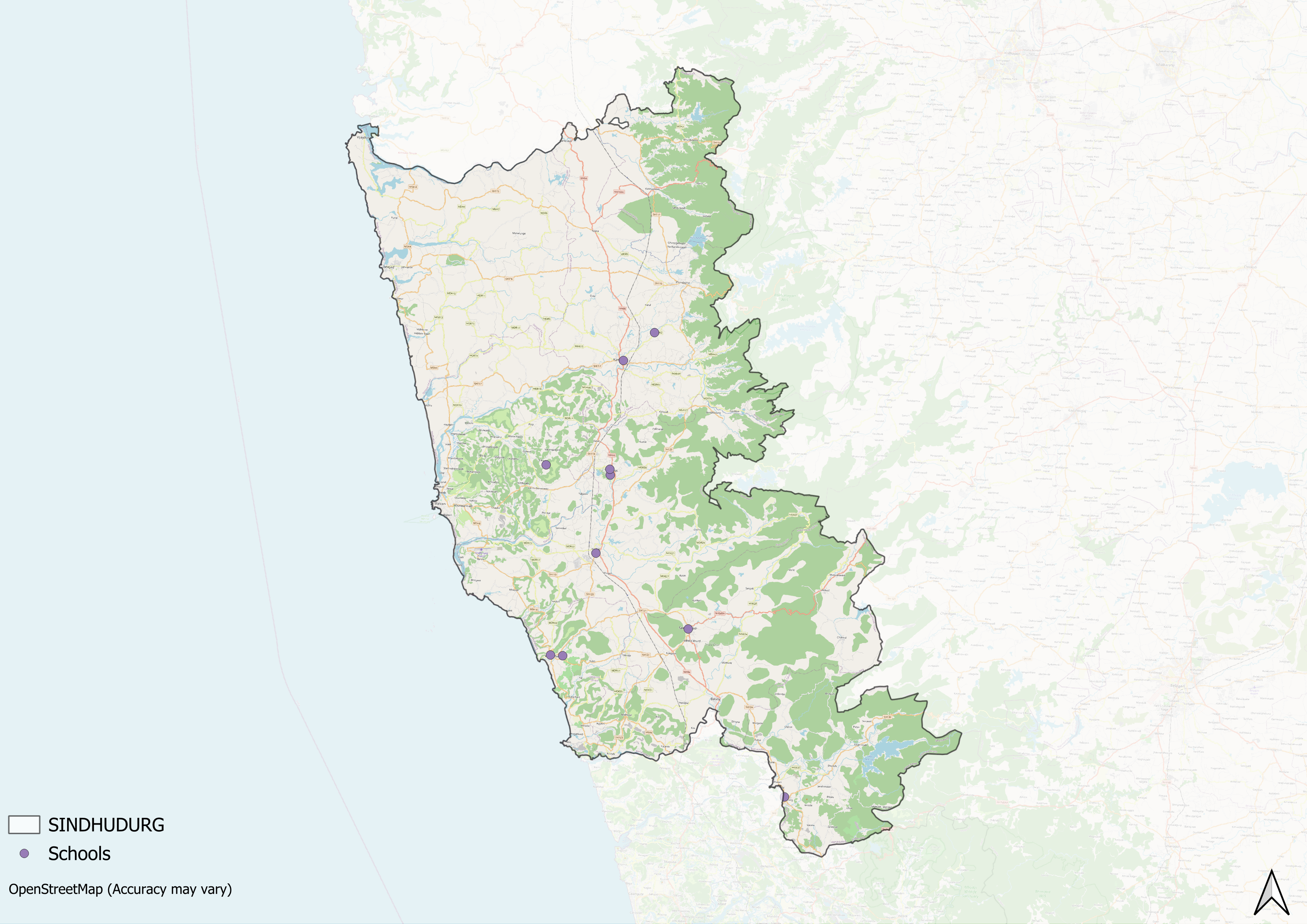
Today, this expansion is evident in the widespread presence of schools across various wards of Sindhudurg, with available data reflecting the steady growth of educational institutions in both urban and rural parts of the district.
Institutions of Higher Learning
Perhaps one of the most notable changes in Sindhudurg’s educational landscape is tied to the establishment of higher education institutions. While primary and secondary schooling expanded steadily, opportunities for advanced education remained limited for much of the district’s history. Over time, local leaders and organizations played a crucial role in addressing this gap, leading to the creation of several colleges. As a result, many institutions in the district today are privately managed, semi-private, or autonomous.
RJVS Bhaisaheb Sawant Ayurved Mahavidyalaya
RJVS Bhaisaheb Sawant Ayurved Mahavidyalaya, commonly known as RJVS Sawantwadi, is a private Ayurvedic college located in Sindhudurg. Established in 1984, the institution is affiliated with the Maharashtra University of Health Sciences, Nashik, and is approved by the Central Council of Indian Medicines. The role of the former Education Minister, Bhaisaheb Sawant, who was also a former Health Minister of the state, was instrumental in the establishment of the college.
Government Polytechnic College
Government Polytechnic, Malvan, located in Sindhudurg, Maharashtra, was established in 1985. As a government institution, it is accredited by the All India Council for Technical Education (AICTE). The college offers a range of programs, including seven courses across two main streams: Engineering and Science.
Devgad College, Devgad
Shri S.H. Kelkar College, also known as Devgad College, is affiliated with the University of Mumbai. The college offers a range of undergraduate and postgraduate programs.
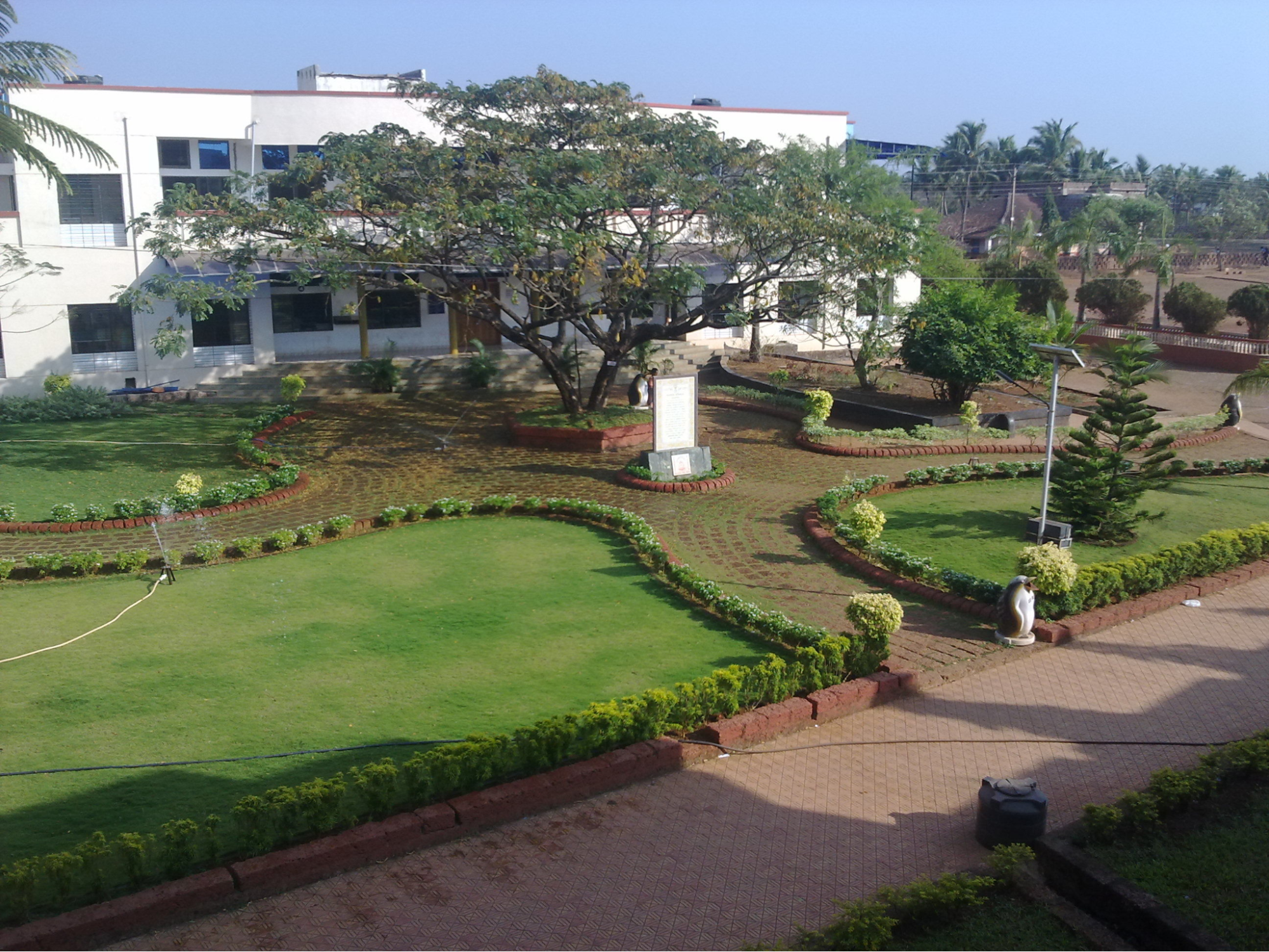
The college’s Arts faculty offers a Bachelor of Arts degree with specializations in Economics, Marathi, English, History, Geography, and Rural Development. At the postgraduate level, the college provides a Master of Commerce (M.Com) and a Master of Arts in Rural Development.
The college’s Science wing is noted for being the second institution in Sindhudurg to offer science programs and the first to provide postgraduate education in this field.
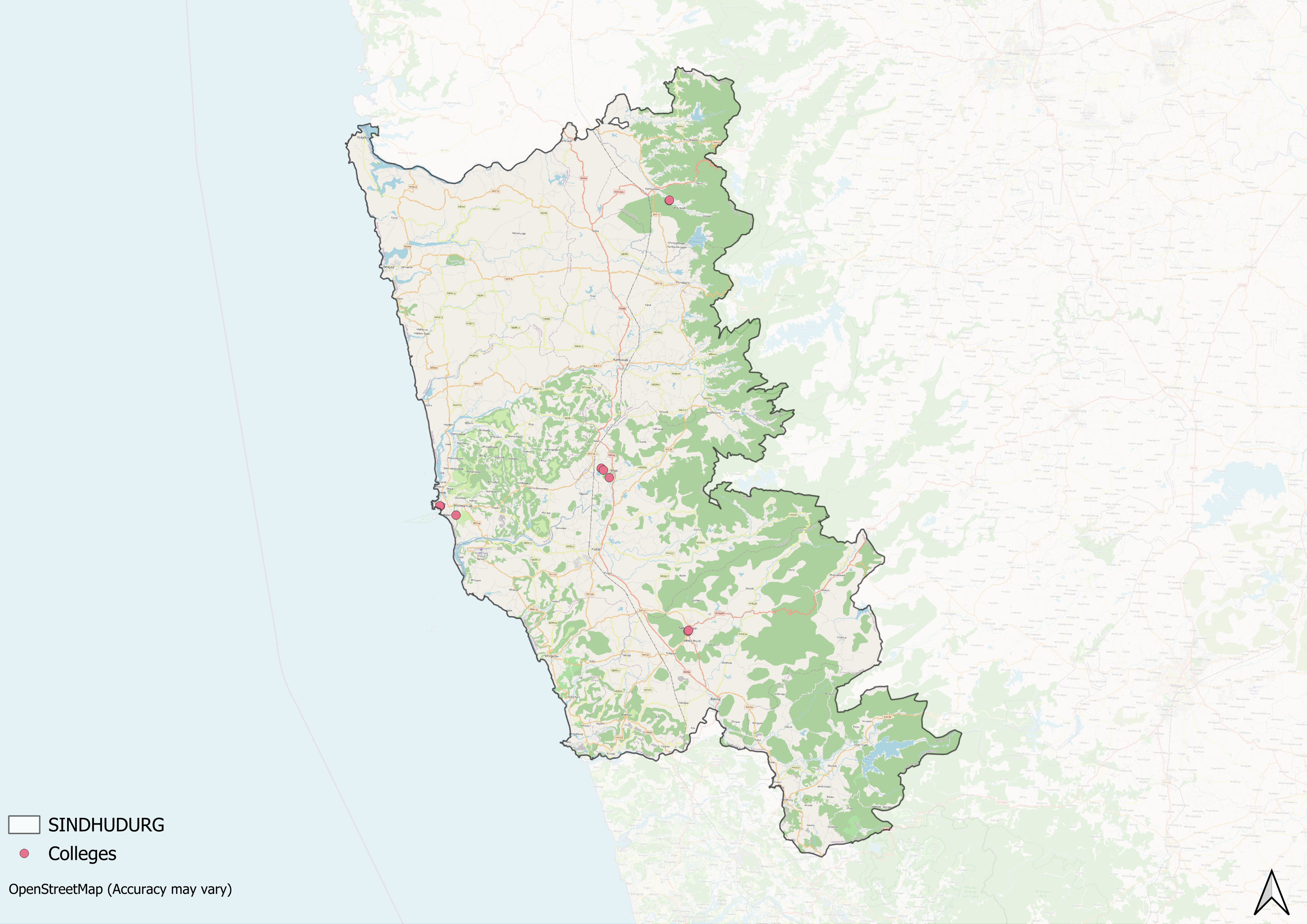
In addition to these institutions, a number of centres for higher education operate throughout the district, which offer programmes across various disciplines. While the landscape of higher education has broadened significantly since independence, disparities in access, particularly along geographic lines, remain evident.
Prominent Figures & Organizations
Phondagat Education Society
The Phondaghat Education Society was established on 28 April 1952 with the aim of improving educational access in the rural and hilly regions of Sindhudurg district. At a time when the district’s educational infrastructure was limited, a group of young residents from the village of Phondaghat initiated efforts to address the lack of formal schooling in the Sahyadri mountain region. Their aim was to provide educational opportunities for children who were otherwise excluded due to geographical and infrastructural barriers.
The society’s first educational initiative consisted of a Class 8 course for 22 students, conducted without fees in a temporary classroom located in a shop. The institution was supported through donations from local traders, who contributed land and financial assistance, as well as from farmers in the surrounding Panchkroshi area, who organized grain collections to fund the school.
By the mid-1950s, construction began on a dedicated school building, which initially housed three classrooms for secondary education. Over the following decades, the institution expanded its academic offerings to include Arts and Commerce college courses, thereby facilitating access to higher education for students in the region. Additional developments included the introduction of English medium classes and the acquisition of a school bus to address transportation challenges.
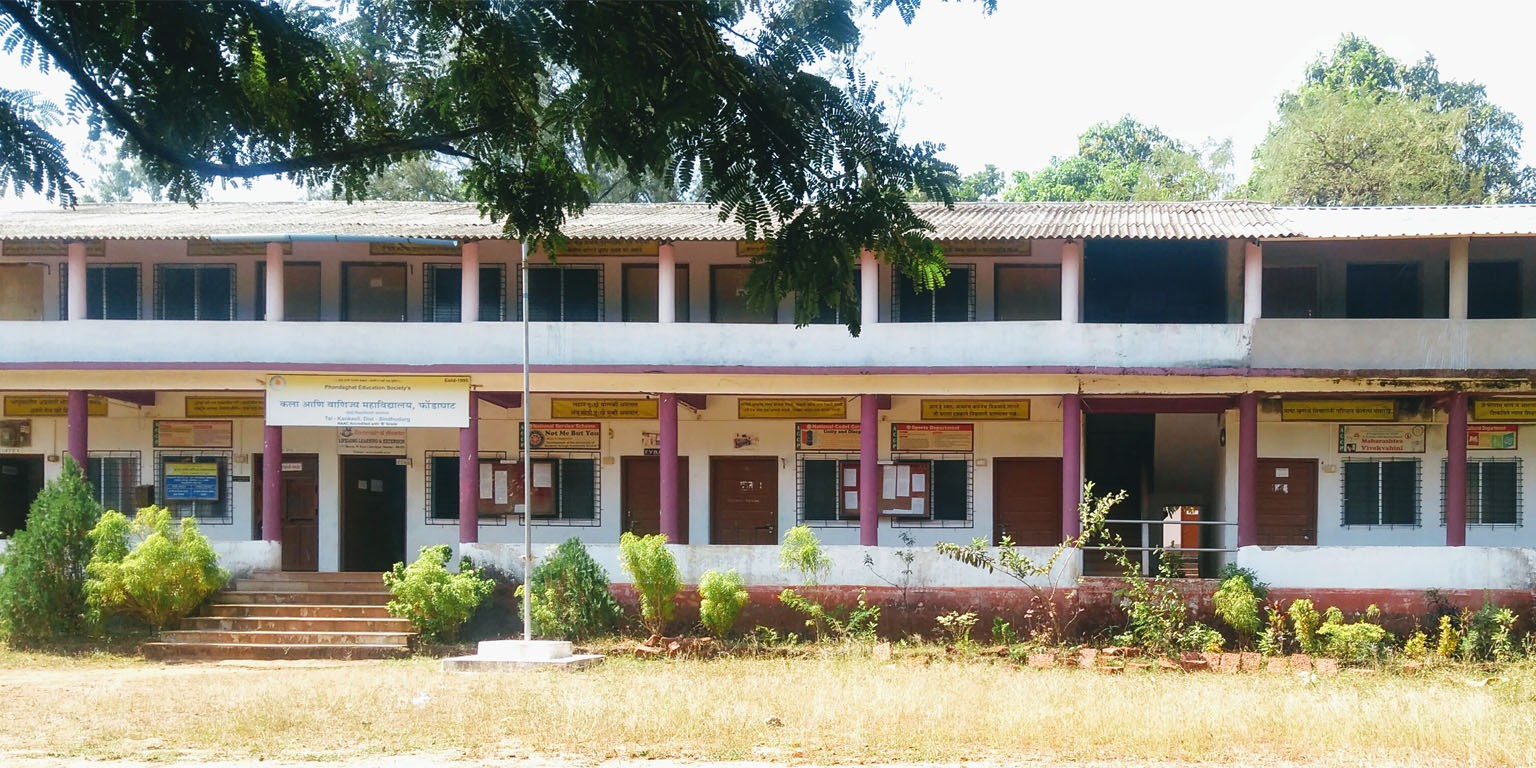
NGOs and Community-Based Education Efforts
Education has been a key driver of social reform, particularly in addressing inequality and expanding access to learning. While formal institutions provide structured education, many communities continue to face barriers due to poverty, social stigma, or lack of resources. To address these challenges, various organizations in Sindhudurg have focused on community-based education initiatives, with each working to tackle specific social challenges present in the district.
Dada Chi Shala
Dada Chi Shala (literally, "elder brother’s school") was founded in July 2020 by Abhijeet Pokharnikar and two of his college peers, following the relaxation of COVID-19 lockdown measures. Initially focused on supporting children of brick kiln workers, the initiative grew into a broader educational programme aligned with the United Nations Sustainable Development Goals (UNSDGs), particularly in the area of inclusive and equitable quality education.
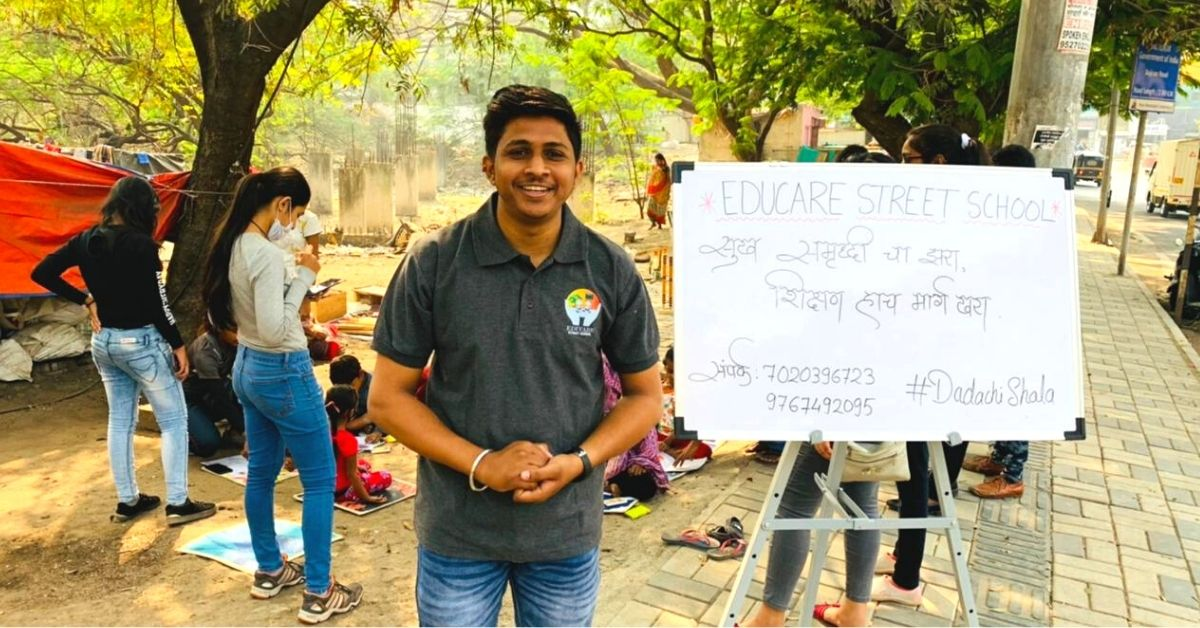
The initiative serves children from a range of underprivileged backgrounds, including members of the Banjara community, children of sex workers, garage and kiln laborers, and residents of informal settlements. Operating in both Sindhudurg district and Pune, Dada Chi Shala aims to bridge learning gaps caused by pandemic-related disruptions. Its focus includes foundational subjects such as Mathematics and Science, language development, and broader efforts to enhance educational engagement within marginalized communities.
Graphs
Enrollment and Dropout Rate
Schools
Teachers
Sources
Ajay Joshi. 2022. “And How the Puppets Danced.”Medium. medium.com/@journo.ajay/and-how-the-puppets-danced-96d3d8e835f9https://medium.com/@journo.ajay/and-how-the-…
B.S. Ambedkar Swadhyay Mandir. “About the Founder”.https://web.archive.org/web/20211024154035/h…
Devgad College. “About Devgad College”. shkcdevgad.edu.in/aboutus/about-devgad-collegehttps://shkcdevgad.edu.in/aboutus/about-devg…
Dr. Eknath Shankarrao Mundhe. 2017. A Study of Socio-Economic Status of Thakur Tribal Women in Thane District, Maharashtra. The Criterion.https://www.the-criterion.com/V8/n2/EC01.pdf
Gazetteer of the Bombay Presidency. 1880. Ratnagiri and Savantvadi. Printed at the Government Central Press.
Himanshu Nitnaware. 2021. “How a Pune Man Ensured Education for Underprivileged Kids During COVID Lockdown.” The Better India. thebetterindia.com/257522/pune-covid-lockdown-underprivileged-children-education-un-sdg-dada-chi-shala-hero-him16/https://thebetterindia.com/257522/pune-covid…
Phondaghat College. “History”.https://www.phondaghatcollege.in/history/
Last updated on 28 July 2025. Help us improve the information on this page by clicking on suggest edits or writing to us.